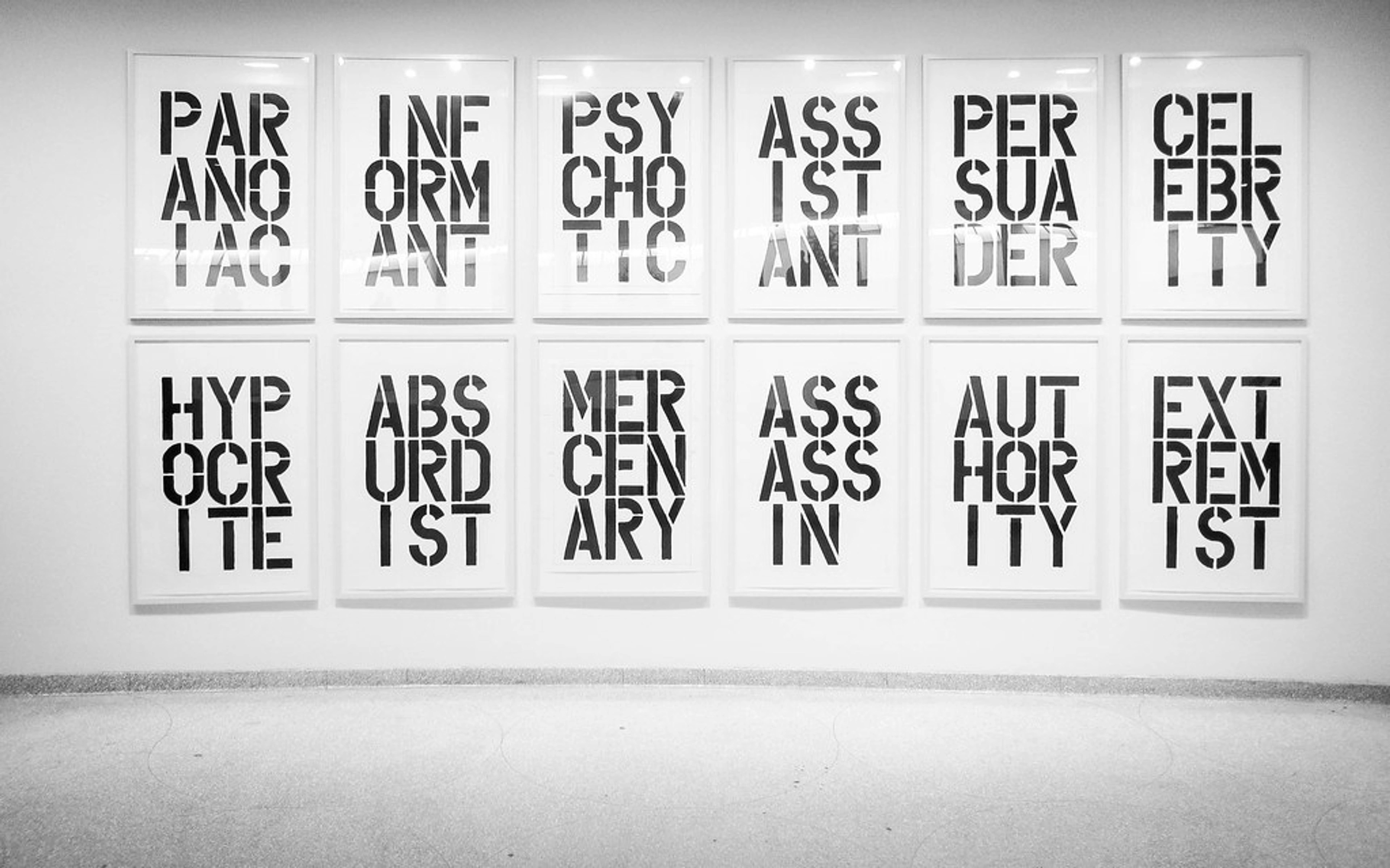
Drawing for Abstract Artists: Unlock Creative Freedom & Master Visual Language
Discover how drawing, far from being rigid, is the foundational skill that liberates abstract artists. Explore essential techniques, diverse mediums, and a powerful mindset to boost creativity, overcome blocks, and sculpt your unique artistic voice.
Drawing for Abstract Artists: Techniques, Mindset & Creative Freedom
I remember a time when the mere thought of drawing filled me with a quiet dread. Not because I didn't love art – oh, no, my walls (and my shop) will tell you a very different story – but because "drawing" felt so... precise. So representational. As an artist who revels in the glorious chaos of abstract expression, the idea of perfectly rendering a still life felt like being asked to do my taxes while juggling flaming chainsaws. My first disastrous attempt at drawing a horse looked more like a four-legged potato with a bad hair day, and the embarrassment lingered for years. It took a long time, and a fair bit of internal wrestling, to realize that this 'precise' skill, this very act of putting line to paper, was actually the bedrock of everything I loved about art, even the wildest, untamed stuff. But here's the kicker, and maybe a confession: drawing is the silent backbone of almost all art, even the wildly abstract creations I'm known for. It’s the whispered secret, the foundational truth. And honestly, it’s not nearly as scary as I once thought. In fact, it’s quite liberating, especially when you understand how it demystifies art and unlocks boundless potential for abstract artists, transforming intimidation into intuitive mastery. It's the language that helps you truly see, and then express what you see, or feel, in ways you never thought possible, bridging the gap between your inner vision and its outward manifestation.
Why Drawing? My Honest Confession & The Foundational Power for Abstract Vision
You might be thinking, "But you paint abstract! Why should I, or you, care about drawing techniques?" A fair question, and one I've asked myself many times, usually while staring at a blank canvas with a vague sense of creative stagnation. For years, I avoided traditional drawing like it was a surprise family gathering I hadn't RSVP'd to. My art was about color, emotion, texture – the feeling, not the form. I wanted immediate, unbridled expression. But then something shifted. I realized that even in abstraction, there's a certain logic, an unseen structure that holds things together. And that structure? It often starts with a line, a gesture, a sense of perspective.
Drawing teaches you to see. Really see. Not just what's literally there, but the relationships, the subtle interplay of light and shadow, the often-overlooked negative space. For the abstract artist, this translates to understanding how shapes interact, how values create implied depth, or how light suggests a focal point without depicting a recognizable object. It's pure visual problem-solving. How do you create tension or harmony in a non-representational space? How do you guide the viewer's eye through a field of pure color? Drawing helps you map these solutions. And frankly, I've found it invaluable, even if my final pieces often look like a happy explosion of paint.
Historically, drawing was the very first language for visual communication, the direct conduit from mind to surface, long before cameras or digital tools existed. Think of the compelling cave paintings that captured the essence of movement, or the Renaissance masters who used drawing as the rigorous foundation for their grand masterpieces. Drawing was also the bedrock of scientific discovery, from the intricate anatomical studies of Leonardo da Vinci to the precise botanical illustrations that charted the natural world. Even the Impressionists filled sketchbooks with quick studies of light and form. Early Modernists like Picasso or Kandinsky often began their abstract explorations with observational drawings, gradually simplifying and distilling reality. Consider how the Cubists meticulously deconstructed forms through analytical drawings, paving the way for abstract representation. The Futurists used drawing to capture the dynamism of motion and speed, feeding directly into their abstract canvases. Kasimir Malevich's Suprematist compositions, while purely abstract, still relied on an underlying geometric precision rooted in drawing, and Piet Mondrian's iconic abstract grids evolved from years of observational studies of trees and landscapes, distilling reality to its barest essentials. Beyond that, artists like Henri Matisse used drawing to explore the fluid dance of line in his abstract cut-outs, and Joan Miró filled countless sketchbooks with symbols and shapes that would later populate his surreal abstract worlds. It’s like learning to walk before you can dance a samba on roller skates – without that foundational drawing, your abstract compositions might feel a bit... wobbly. Beyond the technical, drawing can be a deeply mindful practice, a quiet space for stress relief, and a powerful way to process emotions, much like the spontaneous flow of my creative process. It can even be a unique form of visual journaling, a silent conversation with yourself that later informs your most vibrant abstract art work.
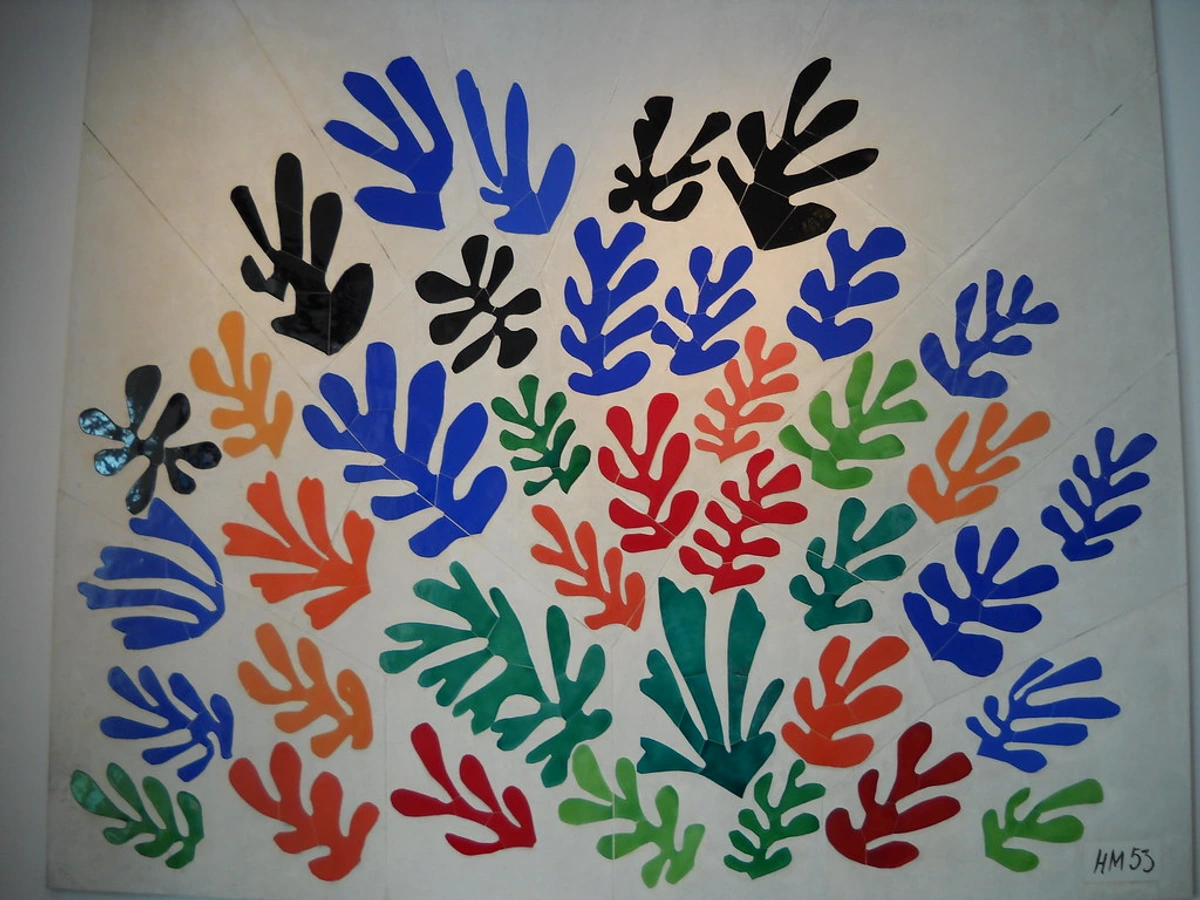
https://live.staticflickr.com/6090/6059309027_476779f1de_b.jpg, https://creativecommons.org/licenses/by-sa/2.0/
Matisse's 'La Gerbe' is a testament to the power of line and shape, distilled through drawing, even in his most abstract and later works.
So, if drawing holds such quiet power, what are the actual building blocks we need to understand to truly harness its energy and elevate our abstract vision? Let's get down to the nitty-gritty, the essential language that speaks beyond words.
The Building Blocks: Essential Drawing Techniques for Abstract Artists
These aren't just rules; they're more like secret handshakes for getting your visual ideas across. And trust me, if I can wrestle with them, so can you. They are the scaffolding upon which even the most ethereal abstract concept can find its form. Every mark you make, every line you draw, is a form of mark-making, a fundamental act that defines your unique artistic language.
Line Work: More Than Just a Mark
A line isn't just a line. It can whisper, shout, or elegantly glide. It's the DNA of drawing, and understanding line weight – how thick or thin, dark or light a line is – can dramatically change how you perceive form and emotion. It's a subtle but powerful tool, even in abstract art, to create dynamism, rhythm, and movement – think of a fast, energetic line versus a slow, deliberate one. Varying line weight can establish a visual hierarchy, drawing the eye to certain areas or creating a sense of unfolding depth, much like a visual melody or 'visual music.' Beyond structure, a line's character can imbue a piece with specific emotions: a delicate, broken line might convey fragility, while a bold, unwavering stroke could express confidence or aggression. Line work is also fundamental in creating visual texture and implied surfaces, where the quality and repetition of lines suggest rough, smooth, or grainy fields without explicit rendering. For a deeper dive into this elemental power, explore the definitive guide to understanding line in abstract art.
- Contour Drawing: This is where you outline the visible edges of an object. Think of it as feeling your way around the object with your pencil, without lifting it. It forces you to really look. My first attempts looked like a squiggly worm trying to escape the page, but the focus it requires is incredible, leading to unexpected organic shapes perfect for abstract compositions. Try this on your next coffee cup and see what unexpected outlines emerge!
- Hatching & Cross-Hatching: Ah, the classic way to create value and texture. Hatching is drawing parallel lines; cross-hatching is doing it again in another direction. I used to find cross-hatching tedious, but then I realized it's like building up layers of intensity in a song. The more layers, the deeper the tone, creating a rich visual density in abstract fields. I still sometimes get ink smudges on my pinky finger when I do this, a small price to pay for that depth! Experiment with combining different angles to suggest various abstract textures.
- Scribble & Gesture Lines: Sometimes, you just need to let loose. Scribble drawing is exactly what it sounds like – expressive, energetic lines that capture movement or form quickly. It's fantastic for letting go of perfectionism, something I champion in my art. (Remember embracing accidents?) For abstract artists, this translates into powerful, uninhibited marks that establish underlying rhythms and raw energy. Let your hand dance across the page and see what spontaneous forms appear.
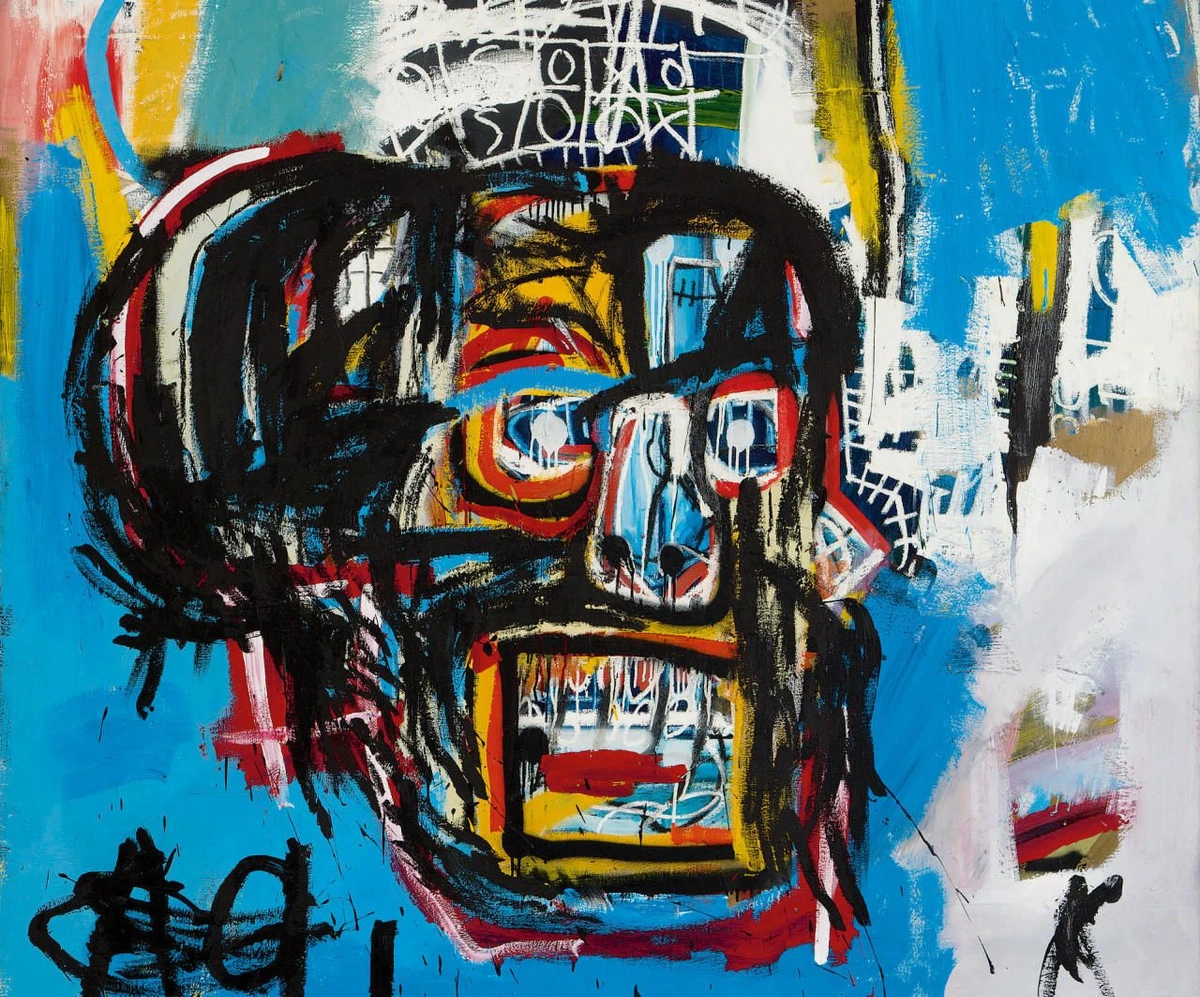
https://heute-at-prod-images.imgix.net/2021/07/23/25b32e7b-0659-4b35-adfe-8895b41a5f89.jpeg?auto=format, https://creativecommons.org/licenses/by/4.0/
Basquiat's expressive lines often feel like a controlled scribble, full of raw energy and varying line weight, a fantastic example for abstract artists. For more on this master, explore the ultimate guide to Jean-Michel Basquiat.
How do you use line to express an emotion, rather than just define a shape, in your own work?
Shading & Value: Bringing Form to Life (or Implied Life)
This is where your flat drawing starts to pop into three dimensions. It’s all about light and shadow, and ultimately, defining form – the illusion of a three-dimensional object on a two-dimensional surface. Value refers to the lightness or darkness of a tone. Even in my abstract work, implied form and strong value contrasts can be crucial for visual interest, creating depth and drama without depicting recognizable objects. Imagine a stark black shape against a glowing white background, or a gradient of grays that suggests a voluminous, yet undefinable, presence. That's value at play in abstraction. Beyond creating depth, value can also establish a sense of "visual weight" or "energy" – a dark, dense area might feel heavy and grounding, while a light, sparse area could convey openness or lightness, actively shaping the emotional impact. Don't forget the power of negative space, the often-overlooked area around and between objects. In abstract art, negative space is just as important as positive space, actively shaping the composition and creating implied relationships between elements. Imagine an abstract piece where the 'empty' space between two bold, geometric forms creates a third, equally compelling, implied shape – here, the negative space becomes the subject itself, inviting the viewer's eye to complete the form. Challenge yourself to make the empty spaces as compelling as the filled ones. How do your negative spaces speak in your abstract art?
- Chiaroscuro: A fancy word for using strong contrasts between light and dark, especially in drawings, to achieve a sense of volume. Think Rembrandt or Caravaggio – they were the masters of making things dramatically emerge from darkness. In my own abstract art, I adapt chiaroscuro not to depict specific forms, but to create a powerful sense of atmospheric depth or to make certain abstract elements feel as if they are emerging from or receding into the canvas, giving them an almost sculptural quality, like a dark, swirling vortex against a luminous, breaking dawn. It's about creating a dramatic mood through light and shadow, not necessarily representation. Try creating a small abstract study using only extreme darks and lights.
- Stippling: Creating value using dots. Lots and lots of dots. It requires patience, yes, but the texture you get is incredibly rich. Sometimes, when I’m feeling particularly methodical (which isn't often!), I'll use a pointillist approach in my abstract work too, building up fields of color or texture with countless tiny marks to create a shimmering, ethereal effect or a sense of granular density. It's a wonderful way to meditate while building intricate surfaces.
- Scumbling: Building up layers of scribbled marks or soft smudges to create soft, blended transitions in value. It's less precise than hatching but incredibly effective for atmospheric effects, perfect for creating ethereal or hazy passages in an abstract piece, allowing colors and tones to melt into one another with a dreamlike quality. I once used this technique to create a nebula-like effect in a painting, totally by accident, but it became a favorite part! Explore how scumbling can suggest hidden layers or diffused light in your abstract work.
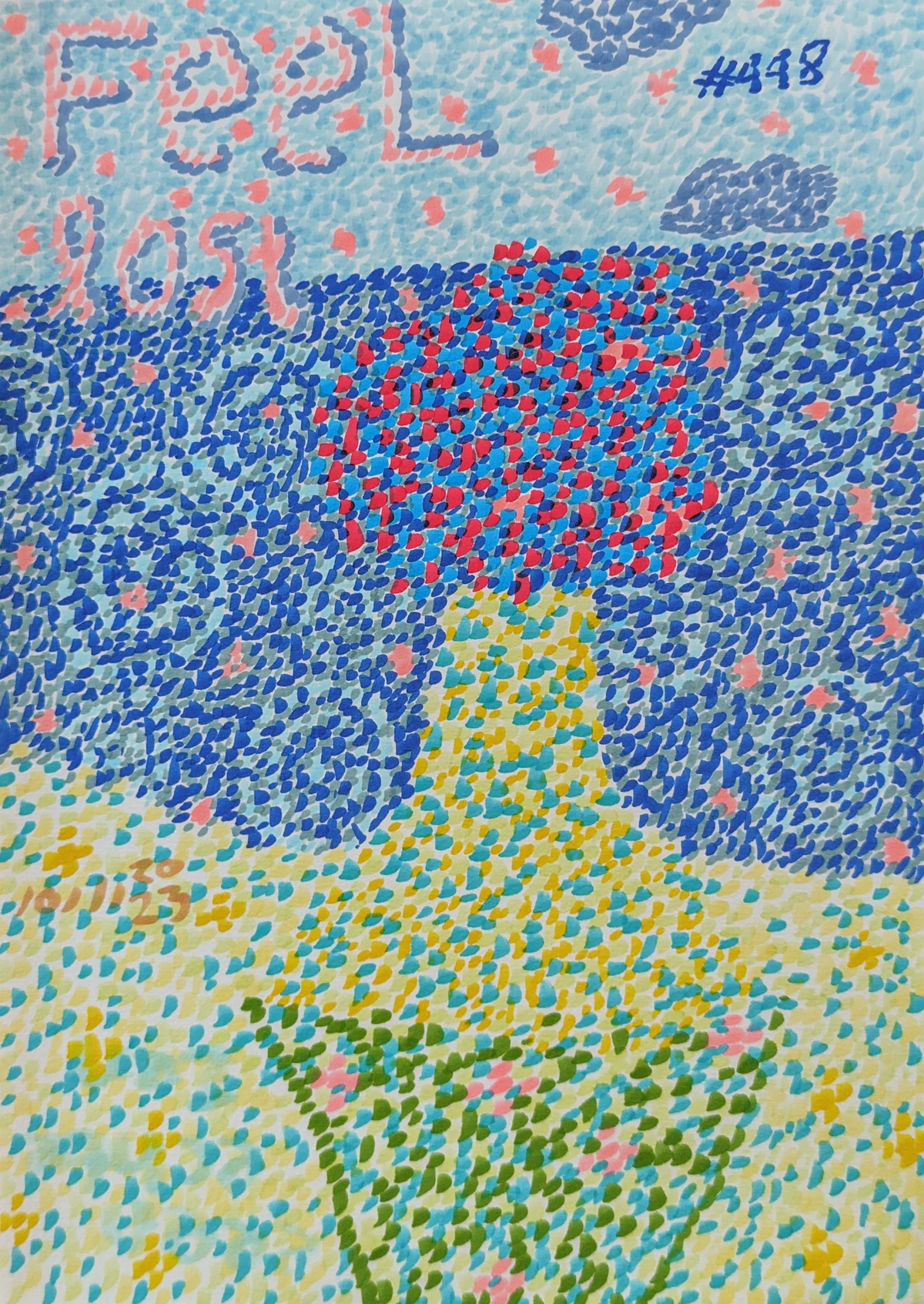
Zen Dageraad, https://creativecommons.org/licenses/by/4.0/
My own work sometimes employs stippling-like dots to build texture and value, hinting at form in abstract ways.
How do shifts in value create a mood or tell a story in your non-representational pieces?
Perspective: The Illusion of Depth and Playful Distortion
Ah, perspective. It’s a word that used to make my eyes glaze over faster than a tax form, yet it’s the secret weapon for creating depth and illusion on a flat surface. At its core, it’s about making things look further away or closer than they actually are, playing with how our eyes naturally interpret space. Think of railroad tracks converging in the distance – that point where they seem to meet is the vanishing point, the conceptual anchor for creating depth. Even for abstract artists, understanding traditional perspective provides a powerful foundation that informs how one can intentionally break those rules to achieve unique, otherworldly effects. The real magic for abstract art comes when you understand these rules so deeply that you can intentionally break them to create compelling illusions or disorienting compositions. For instance, deliberately converging lines that lead to a jarring, unexpected break can evoke a powerful sense of unease or playful disorientation, challenging the viewer's perception of stability. You can even hint at atmospheric perspective in abstract work, where distant forms become lighter or less distinct, creating an illusion of vast, undefined space. (And yes, even I sometimes get a bit tangled in the vanishing points, but that's part of the fun!)
- One-Point, Two-Point, Three-Point: Without getting bogged down in overly technical details (which, let's be honest, can still sometimes make my brain melt), these are the basic frameworks. One-point is great for interiors or roads receding into the distance. Two-point adds a corner, making buildings look more realistic. Three-point makes things look towering or tiny. If you really want to dive deep into making your art pop off the page, this understanding is a game-changer; explore the definitive guide to perspective in art for a comprehensive look. Try sketching a simple geometric form and then deliberately distorting its perspective for an abstract effect.
![]()
https://www.rawpixel.com/image/547292, https://creativecommons.org/publicdomain/zero/1.0/
Monet, though known for color, masterfully uses perspective to create depth and guide the eye in his landscapes, a principle adaptable to abstract compositions, even if only to cleverly subvert it.
How might you intentionally break or distort traditional perspective to create an emotional impact in your next abstract piece?
Composition: Arranging Your Visual Symphony
Composition is like being a conductor for your visual elements. Where do things go? How do they relate? How do you guide the viewer's eye? It's about creating a visual journey. And sometimes, it's about defining a focal point – an area of emphasis that first captures attention before allowing the eye to wander. It also helps establish visual rhythm, the way your eye moves through the artwork, creating a sense of movement, tension, or calm. For a comprehensive exploration, dive into the definitive guide to composition in abstract art.
- Rule of Thirds: Imagine dividing your page into nine equal squares with two horizontal and two vertical lines. Placing key elements along these lines or at their intersections often creates a more balanced and engaging image. It’s a classic for a reason – it provides an immediate sense of visual harmony that's hard to beat, even when arranging non-representational shapes. Use it as a starting point, then deviate to create your own unique balance.
- Balance & Harmony: It’s not always about symmetry. Asymmetry can be incredibly dynamic, like a perfectly placed off-center splash of vibrant red against a muted field of blue that still feels perfectly weighted and right. In abstract art, asymmetrical balance can be achieved through careful consideration of color weight, texture, or the visual density of shapes, not just their physical placement. For example, a single, highly intricate, complex abstract shape on one side of a composition can be visually balanced by a much larger but simpler, more subdued shape on the other, creating a dynamic equilibrium. It’s about how all the elements coalesce to form a cohesive and unified piece, creating a satisfying visual experience that speaks to the viewer on an intuitive level. My abstract works are often a delicate dance of balance and harmony, even when they look spontaneous. Think about how design in art influences the overall feel. This creates a satisfying visual experience that speaks to the viewer on an intuitive level. You can even use composition to suggest an implied narrative in abstract work – a visual story without a literal subject, guided purely by the arrangement of elements.

Zen Dageraad, https://creativecommons.org/licenses/by/4.0/
My abstract pieces often rely on a careful balance of shapes and lines to create a dynamic composition, even without a clear subject, guiding the eye through a vibrant visual story.
Beyond the Rule of Thirds, what unconventional compositional choices have led to surprising depth or energy in your abstract sketches?
Mediums and My Personal Playground: Tools for Abstract Discovery
Now that we've laid the groundwork with these essential techniques, let's talk about the tools that bring them to life – the mediums that become our personal playgrounds for abstract discovery. The beauty of drawing is its accessibility. You don't need fancy equipment to start. I once spent an entire afternoon just drawing with a cheap ballpoint pen and scrap paper, and it was one of the most liberating creative sessions I've had. Each medium offers a unique personality, and finding the ones that sing to your abstract soul is part of the adventure. They each offer unique ways to explore texture, value, and form in a non-representational context, becoming extensions of your creative will.
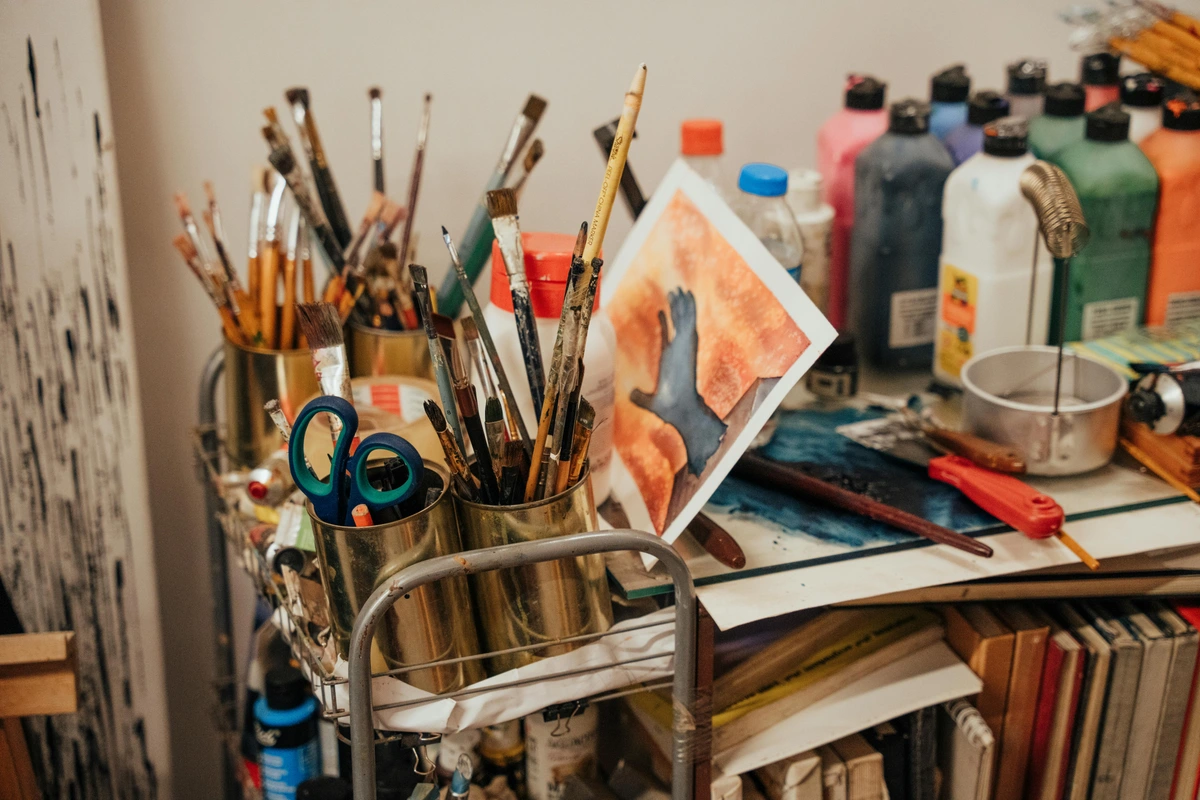
https://www.pexels.com/photo/creative-art-studio-with-brushes-and-paints-29589096/, https://creativecommons.org/public-domain/
The right tools can open up new avenues for abstract exploration, but don't let a lack of fancy supplies stop you. Often, the simplest tools yield the most profound insights.
- Pencil: The humble graphite pencil. From hard (H) for light, precise lines to soft (B) for dark, smudgy marks. My personal favorite is a good old 2B for its versatility, offering a great range of values perfect for quick studies of abstract compositions or for building up subtle shifts in tone. Its erasability also makes it ideal for iterative abstract explorations, allowing for constant adjustment and refinement, much like sketching out initial concepts for an abstract painting. Start with a few different hardnesses and feel the difference!
- Charcoal: Messy, dramatic, and utterly gorgeous. Charcoal can create deep blacks and soft smudges that are hard to beat. It's fantastic for expressive, large-scale drawings, a bit like the bold statements I aim for in my paintings. Its smudge-ability offers a softness and depth that can feel incredibly visceral, perfect for creating atmospheric abstract fields or highly gestural marks, ideal for capturing raw emotion and broad strokes of energy. Just remember to use a fixative to prevent smudging once your masterpiece is done – I learned that the hard way when a favorite piece ended up looking like a ghost in the morning!
- Pen & Ink: The precision of a fine-liner or the expressive flow of a brush pen. Ink brings a permanency that makes you think before you draw – a discipline I sometimes desperately need! The crispness of an ink line can create a stark contrast that's powerful in abstract compositions, or a flowing, gestural quality that mimics uncontrolled drips of paint, adding an element of immediate, raw energy and decisive mark-making. Embrace the permanence as a challenge for bold strokes.
- Pastels (Oil & Soft): These bridge the gap between drawing and painting. They offer rich color and a wonderful tactile experience. They remind me a lot of exploring texture in my acrylics, allowing for both bold strokes and delicate blending, perfect for vibrant abstract explorations and building up layered color fields with a painterly feel, offering immediate saturation and a direct connection to pure color. Try blending them directly on the paper for smooth transitions.
- Colored Pencils: An accessible entry point for color, offering the ability to blend, layer, and create subtle tonal variations. They bridge the gap between pure drawing and painting in a very controlled way, perfect for building up nuanced abstract layers and experimenting with color schemes on a smaller scale without the mess of paint, ideal for detailed color studies and intricate abstract patterns. Layer them up to create unexpected hues.
- Digital Tools (Tablet & Stylus): In our modern world, don't overlook the power of digital drawing apps. They offer endless undo buttons, layers, and a vast array of brushes, making them an excellent, mess-free playground for brainstorming abstract concepts, experimenting with quick compositional layouts, and trying out color palettes before committing to a physical canvas. The ability to quickly iterate, experiment with layering and transparency, and use digital brushes that mimic traditional media but offer even more control, without the material cost or clean-up, makes them invaluable for abstract ideation, allowing for fearless exploration of form and color relationships. Dive into the digital realm for boundless experimentation.
Beyond the Basics: My Experimental Techniques for Abstract Breakthroughs
While the foundations are crucial, sometimes you just need to break the rules (or bend them into fascinating shapes). These experimental techniques are fantastic for loosening up, boosting creativity, and discovering unexpected visual language for your abstract art work. They are a direct pathway to finding forms and movements you might never intentionally conceive, and are excellent for breaking through creative blocks by forcing new ways of seeing and mark-making, ultimately leading to more authentic abstract expression.
- Gesture Drawing: Rapid drawings that capture the essence of a pose or movement. Think quick, energetic lines. It's less about accuracy and more about feeling the flow. It’s an exercise in intuition, much like my creative flow in abstract painting, and excellent for capturing dynamic abstract forms, implying energy, or establishing underlying rhythms for larger paintings, as the raw speed often translates into a powerful, uninhibited mark that feels alive. Try to capture the energy of an object, not its precise form.
- Blind Contour Drawing: Draw an object without looking at your paper. Seriously. Keep your eyes on the object and let your hand follow. The results are often distorted and hilarious, but it drastically improves your observation skills by forcing an intimate connection between your eye and the subject. It's a wonderful way to loosen up, and while often resulting in wonderfully bizarre shapes, it can lead to unexpected, organic forms that spark new ideas for abstract compositions you’d never consciously invent, freeing your hand from preconceived notions of "correctness." Give it a try, and don't worry about the "potato-horse" results – they're often the most inspiring!
- Non-Dominant Hand Drawing: Try drawing with your weaker hand. It's frustrating, humbling, and incredibly insightful. It forces you to abandon preconceived notions and embrace a childlike freedom, leading to unexpected, raw lines perfect for expressive abstract art. It's an immediate way to access a different kind of visual language, one less controlled by habit and more by pure intuition. Prepare to be surprised by what your non-dominant hand has to say!
- Continuous Line Drawing: Begin drawing an object without lifting your pencil from the paper until the drawing is complete. It forces you to focus on the interconnectedness of forms and helps develop fluid, confident lines, which can be a powerful underlying structure in abstract pieces, creating a sense of unity and movement where elements flow seamlessly into one another, much like an unbroken melody. See how a single line can define an entire abstract composition.
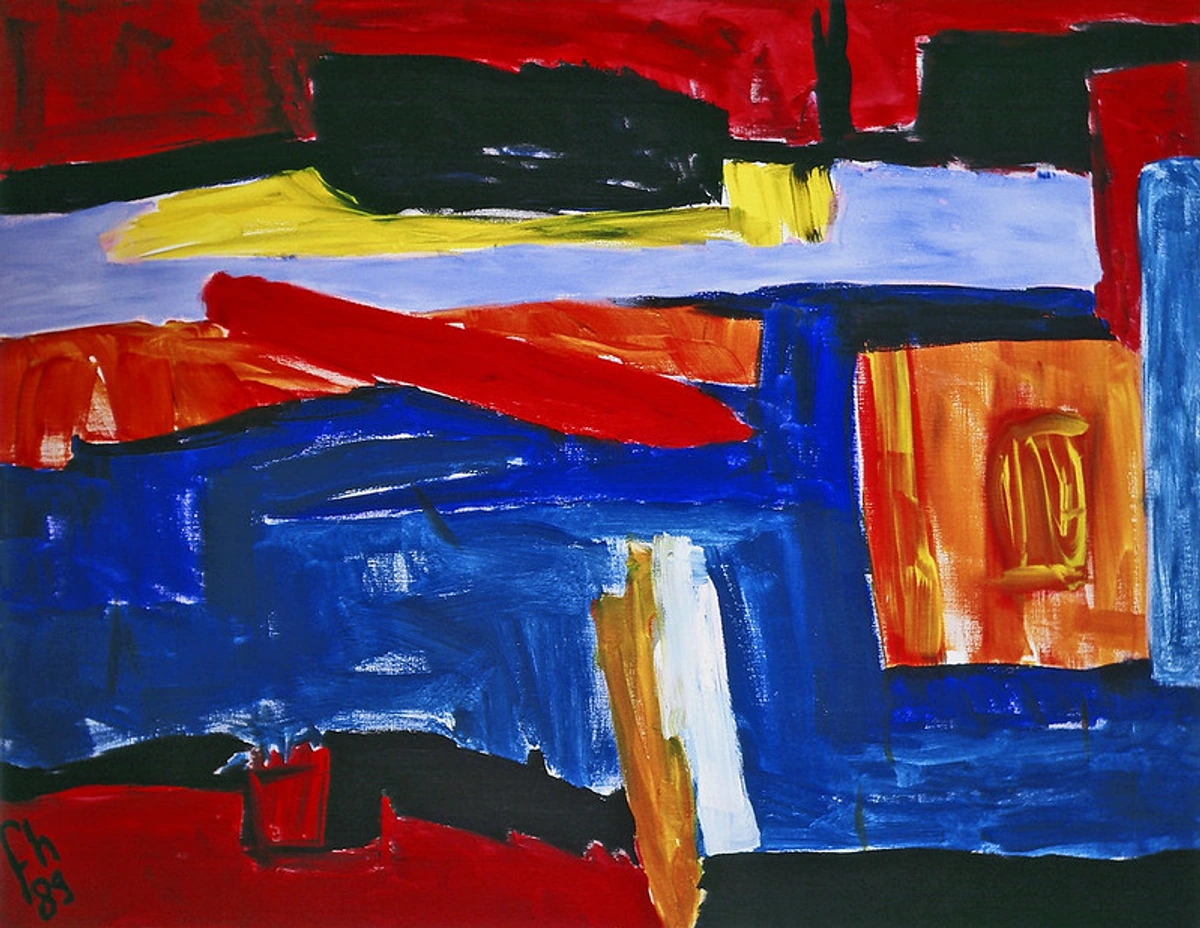
https://www.flickr.com/photos/abstract-art-fons/30634352376, https://creativecommons.org/licenses/by/2.0/
Even in abstract expressionism, the underlying gesture and movement, often rooted in drawing principles, are palpable, a testament to how these experimental techniques can inform spontaneous, powerful abstract compositions.
Drawing for Idea Generation: The Sketchbook as Your Abstract Sandbox
Before committing to a large canvas, my sketchbook becomes my ultimate creative sandbox. It's a low-pressure zone, a private space where I can play without judgment. Quick, loose drawings are an invaluable tool for brainstorming abstract concepts, exploring different compositions, and capturing fleeting visual ideas before they vanish like smoke. It's where I can play with shapes, lines, and color schemes without pressure, letting intuition guide my hand. Many of my most successful abstract paintings have started as a tiny, barely recognizable sketch in a notebook, the initial spark of an idea waiting to ignite. A quick sketch of a tangled vine might inspire a chaotic, interwoven abstract composition, or a simple geometric study could lead to a minimalist abstract piece exploring form and balance.
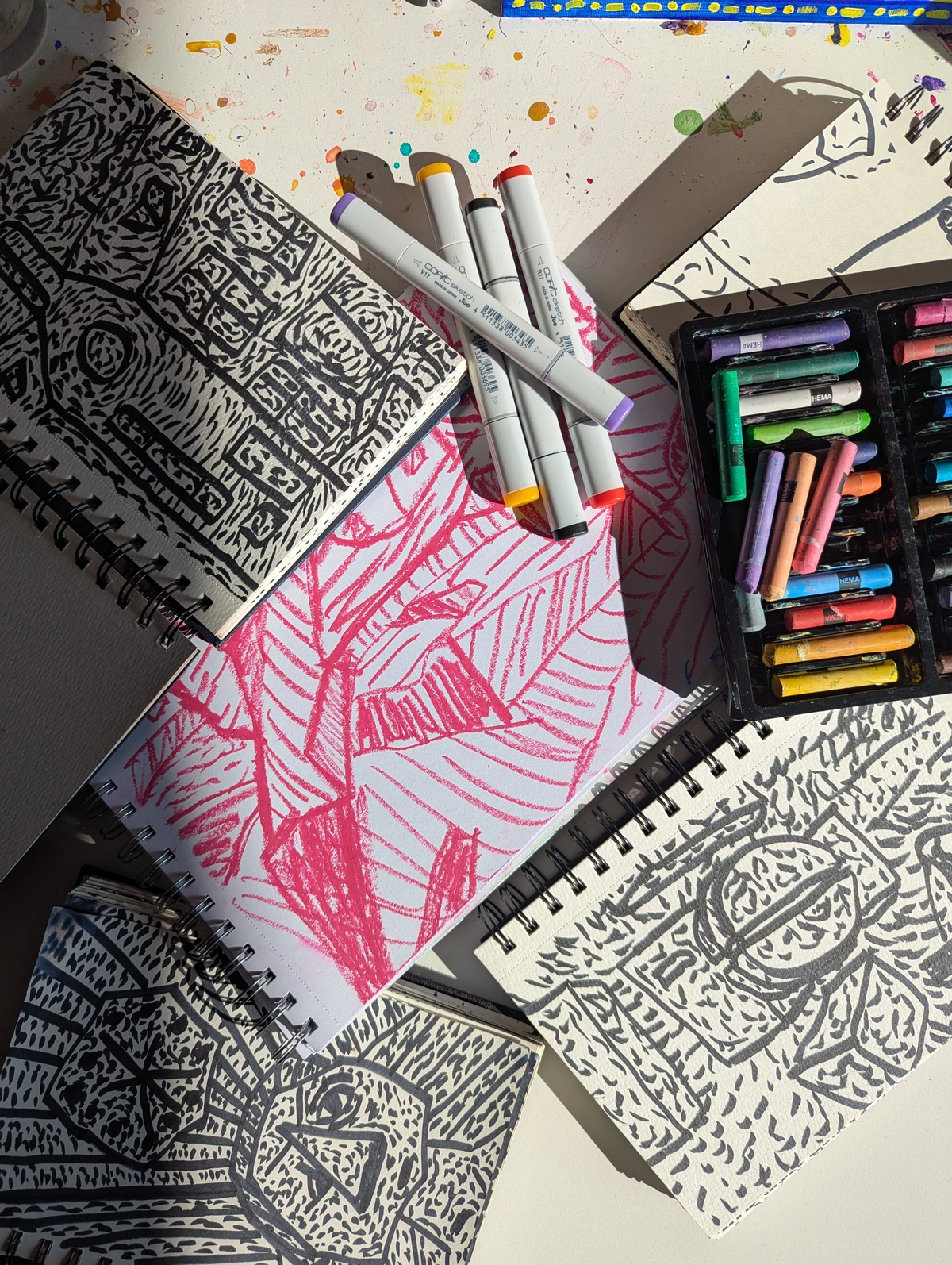
A sketchbook is a personal playground for ideas, a low-pressure space for creative exploration before the canvas – a true sanctuary for abstract ideation.
Drawing for Color Exploration
While drawing is often associated with monochrome, it's an incredibly powerful tool for exploring color. Use quick sketches to test different color palettes, understand how values translate across hues, or plan the emotional impact of color relationships in your abstract work. You can create small color studies with pastels, colored pencils, or even digital drawing apps, experimenting with how vibrant blues interact with warm yellows, or how a pop of crimson can anchor a composition. Explore complementary, analogous, and monochromatic schemes with a few simple marks, truly understanding how colors sing or clash. It's a low-stakes way to preview the chromatic story your abstract piece will tell, helping you solidify the emotional resonance of your abstract color choices before touching paint. You can even use drawing to map out the psychological impact of colors in an abstract piece, like how cool tones might recede or warm tones advance.
Developing a Personal Visual Vocabulary
Every artist develops a unique set of recurring shapes, marks, and textural elements that become their signature – their visual vocabulary. Drawing exercises, especially the experimental ones, are crucial for discovering and refining this personal language. Through repeated exploration of lines, forms, and gestures, you'll start to recognize patterns and motifs that resonate with your inner world. These then become the fundamental building blocks that you can carry across all your mediums, creating a cohesive and deeply personal abstract style that is uniquely yours, transcending the canvas and becoming a part of your artistic identity, a silent echo of your unique way of seeing.
Drawing for Conceptualization
Beyond just generating ideas, drawing helps you develop abstract concepts. It allows you to explore themes, refine symbolism (even abstract symbols), and articulate the narrative or emotional core of a piece before committing to a larger scale. A simple line drawing can clarify a complex abstract idea, helping you understand its internal logic and potential for expression. It's where the abstract idea takes concrete form, even if that form is entirely non-representational.
The Artist's Mindset: More Than Just Technique, It's the Soul of the Abstract Artist
But what if the most important tool isn't in your hand, but in your head? While drawing for idea generation is like planting seeds, cultivating the right mindset is the soil. Techniques are tools, but your mindset is the engine. I've found that how I approach the drawing process is just as vital as knowing how to hold a pencil. It’s a journey of self-discovery as much as skill acquisition, a continuous conversation between your inner world and the marks you make.
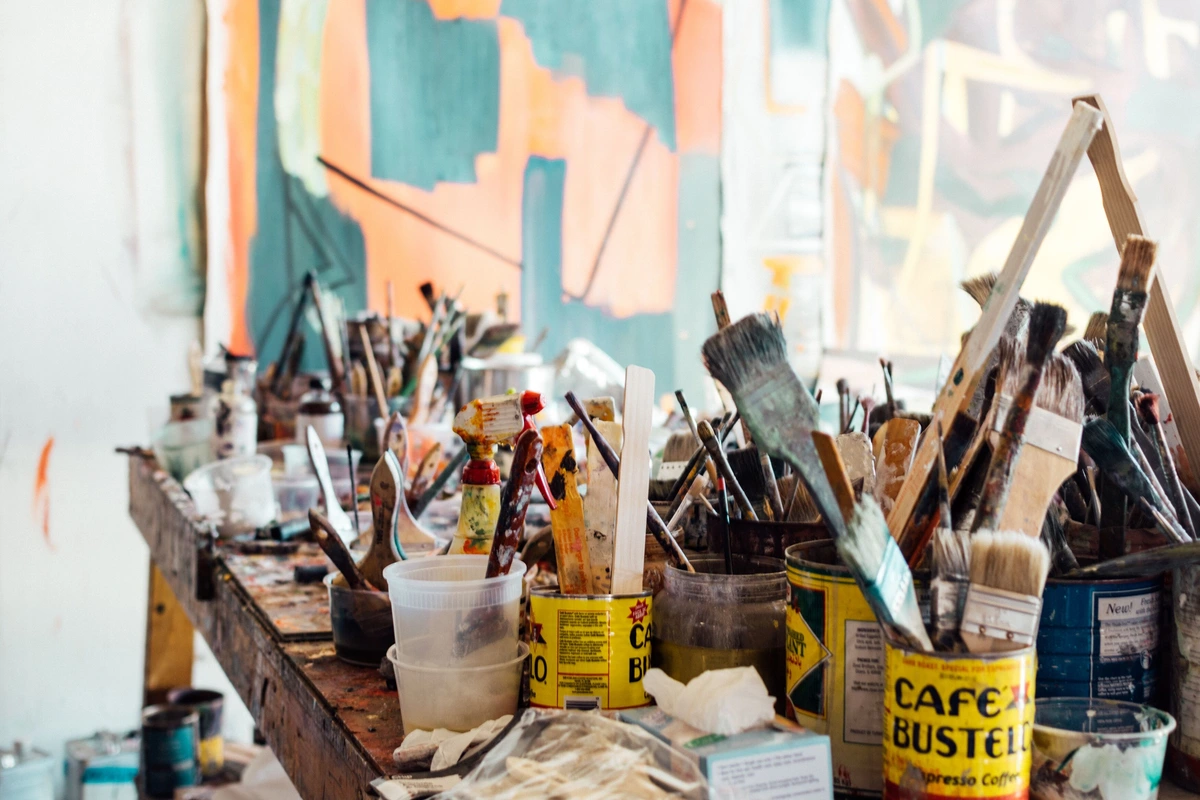
https://freerangestock.com/photos/177284/artists-workspace-filled-with-paint-brushes-and-supplies.html, https://creativecommons.org/publicdomain/cc0/
Beyond tools and techniques, the artist's mindset is the true engine of creativity, fueled by observation, practice, and a willingness to explore, transforming simple marks into profound statements.
- Observation is Key: It’s not just looking, it's seeing. Notice the subtle curves, the way light hits an edge, the texture of a surface. Train your eyes – it’s a muscle. This deep observation translates directly into a richer understanding of forms and relationships in your abstract work, even when you're not trying to replicate reality. It refines your visual vocabulary, allowing you to extract the essence of what you observe and reinterpret it in abstract terms. Make it a daily practice, even if it's just really seeing the pattern on your coffee mug.
- Practice, Practice, Practice: No magic bullet here, folks. The more you draw, the better you get. Even if it's just a doodle during a boring meeting (don't tell my accountant!). Dedicate time. It’s part of my artistic journey, and it's how you build muscle memory and intuitive understanding, allowing your hand to spontaneously create forms that your mind might not have consciously conceived. Consistency truly beats intensity.
- Embrace Imperfection (My Mantra): Your first attempts won't be masterpieces, and that's okay. Mine certainly aren't! In fact, some of the most interesting things happen when you make a "mistake." It’s a core philosophy in my abstract art. These "mistakes" often become the unexpected starting points for abstract breakthroughs, pushing you into new, exciting directions, revealing possibilities you never planned. Let go of the need for perfection and find freedom in the process.
- Patience and Perseverance: Developing drawing skills, especially the nuanced understanding that fuels abstract expression, takes time. There will be frustrating days, but showing up consistently, even when inspiration wanes, builds resilience and ultimately, stronger art. It's a marathon, not a sprint, and every mark, even a wobbly one, contributes to your artistic growth. Trust the process, even when it feels slow.
- Find Your Voice: Ultimately, drawing isn't about perfectly replicating reality (unless that's your jam). It's about expressing your vision. Experiment, play, and let your unique style emerge. That’s the real goal, whether you're creating a detailed portrait or a vibrant abstract painting. Your drawing voice is as unique as your fingerprint. What does your hand want to say?
- Curiosity and Playfulness: Approach your drawing practice with a sense of wonder, as if you're a child discovering the world for the first time. What happens if you try drawing with your eyes closed? What unexpected forms emerge when you scribble freely? This playful attitude fuels experimentation, helps you break free from rigid expectations, and opens doors to truly unique abstract expressions. Let go of the need for a 'correct' outcome and simply explore the possibilities. This mindset is especially crucial for abstract artists, as it bypasses the internal censor and allows for pure, uninhibited mark-making.
- Learn from Other Artists: This doesn't mean copying, but rather analyzing. Look at how artists, both past and present, use line, form, and composition. For abstract artists, think about how a figurative drawing by Egon Schiele or a classical sculpture might demonstrate incredible line quality or dramatic value contrasts – these principles directly inform how you create expressive lines or powerful forms in abstraction. How did Kandinsky's early sketches or Pollock's preparatory drawings inform their more famous, abstract works? Consider how Mark Rothko's simple color field paintings still rely on an understanding of compositional balance and the visual weight of forms, or Willem de Kooning's dynamic, gestural figures informed his explosive abstract expressionism. Even studying artists like Christopher Wool can reveal powerful lessons in abstract line, form, and repetition, despite his often stark aesthetic. It's about understanding their visual language and extracting principles, even if their style is vastly different from your own. It’s a rich source of inspiration that can deepen your own approach, showing you the boundless ways artists communicate.
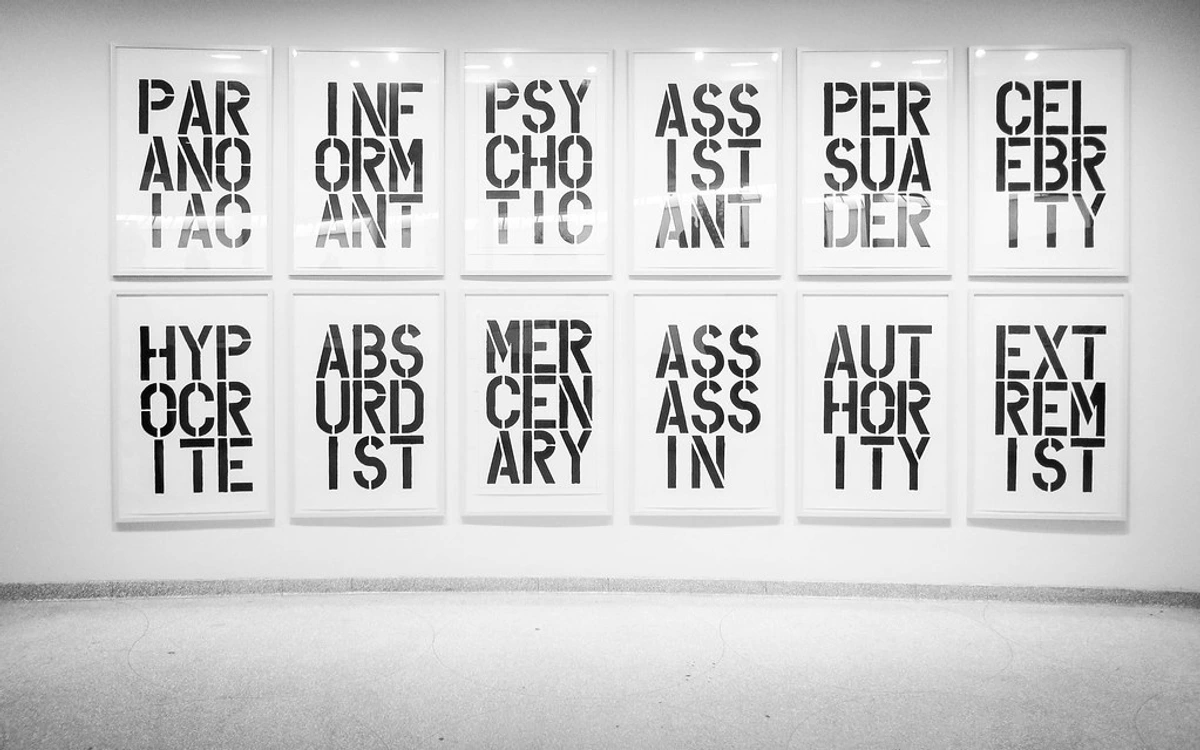
https://live.staticflickr.com/2851/13401949523_202a6aac63_b.jpg, https://creativecommons.org/licenses/by/2.0/
Christopher Wool's "Black Book" drawings, with their bold, stark lines and repetitive forms, offer a compelling study in abstract visual language and strong compositional choices, demonstrating the power of simplicity.
- Psychological Benefits: Beyond stress relief, the act of drawing can significantly boost confidence as you see your skills grow. It's a powerful tool for overcoming creative blocks, as the low-stakes nature of a sketch can bypass the pressure of a blank canvas, allowing you to simply make. Furthermore, it fosters a more intuitive approach to art-making, teaching you to trust your hand and eye, which is invaluable for spontaneous abstract expression and can help you develop a deeper connection to your inner artistic self, a form of visual meditation. Embrace the quiet grounding that comes from simply putting a mark on paper. For abstract artists, this means the freedom to explore internal landscapes without the burden of external representation.
Remember, every line you draw, every smudge you make, is a step not just in understanding the visual world, but in understanding your own unique place within it, refining your artistic voice with each stroke. You might even discover the roots of your abstract language through a simple pencil sketch, a quiet revelation that transforms your entire practice.
Drawing Techniques for Abstract Artists: A Quick Reference Guide
To help consolidate these foundational ideas, here's a summary of key drawing techniques and their direct applications in abstract art:
Technique | Core Idea | Relevance to Abstract Art |
|---|---|---|
| Line Work | Expressive marks, varying weight | Creates dynamism, rhythm, visual hierarchy, defines edges of abstract shapes, implies texture and emotional impact; fundamental for mark-making. |
| Contour Drawing | Outlining visible edges, continuous flow | Develops keen observation, generates unique organic forms for abstract compositions and unexpected outlines; perfect for capturing the essence of form. |
| Hatching/Cross-Hatching | Parallel/intersecting lines for value | Builds texture, creates subtle or dramatic value shifts, implies depth and visual density in non-representational fields. |
| Scribble/Gesture | Rapid, energetic lines for movement/form | Captures raw energy, establishes underlying movement, develops intuitive, uninhibited marks and spontaneous rhythms for abstract expression. |
| Shading & Value | Light and dark tones, form illusion | Creates implied depth and drama, defines planes, establishes mood without representation, controls visual weight and emotional impact; highlights negative space. |
| Chiaroscuro | Strong light/dark contrasts | Builds atmospheric depth, makes abstract elements emerge or recede with power and dramatic effect. |
| Stippling | Dots for value and texture | Adds intricate texture, builds density, creates pointillist abstract fields and shimmering effects; excellent for granular density. |
| Scumbling | Soft, layered marks for blended transitions | Produces atmospheric effects, creates soft gradations, hints at ethereal or hazy forms and seamless color shifts. |
| Perspective | Illusion of depth and space | Guides viewer's eye, creates a sense of space, allows for intentional distortion to evoke emotion and spatial tension; can suggest atmospheric depth. |
| Composition | Arranging visual elements | Establishes balance, harmony, focal points, visual flow, and rhythm in non-representational art, creating a cohesive visual narrative or implied story. |
FAQ: Your Drawing Questions Answered (Probably!)
Is drawing just for realistic art?
Absolutely not! Drawing is about understanding form, line, and value – concepts that are vital in abstract art, graphic design, and even sculpture. It’s a way of thinking visually, a foundational language that transcends genre. My own abstract art often starts with compositional sketches that bear little resemblance to anything "real," yet are crucial for the final piece.
How often should I practice drawing?
Consistency beats intensity. 15-30 minutes daily is far more effective than a marathon session once a month. Make it a habit, like brushing your teeth (but hopefully more fun!). Even five minutes of quick gesture drawing or blind contour practice can keep your eye and hand sharp, building that intuitive connection vital for abstract expression.
What are the essential drawing tools for a beginner?
You don't need much! A few pencils (HB, 2B, 4B), an eraser (kneaded and plastic), a sketchbook, and maybe some charcoal sticks. That's it! Don't get caught up in gear acquisition syndrome; just start drawing. The simplest tools can yield the most profound insights and liberate your creative spirit without intimidation.
How can I overcome the fear of making 'ugly' drawings?
By embracing the process as pure learning! Remind yourself that every drawing, no matter how "ugly" it feels, is a valuable experiment. It’s about building skill and confidence, not instantly creating masterpieces. Letting go of perfectionism is absolutely key to unlocking creative freedom and discovery. Focus on the act of drawing, not the outcome, and see each mark as a step towards finding your unique abstract voice.
How can drawing help me develop my unique abstract style?
Drawing is your playground for experimentation! It allows you to explore shapes, lines, textures, and compositions quickly and without the commitment of paint. By consistently experimenting with different techniques, observing the unexpected results, and letting your intuition guide you, you'll naturally discover visual elements and approaches that resonate with your inner world, solidifying your unique abstract voice. It’s where your personal visual language takes root, ready to blossom into distinctive abstract creations.
How can drawing help me overcome creative blocks in my abstract art?
Drawing, especially with its low-stakes nature and emphasis on process over perfection, is an ideal tool for breaking through creative blocks. Techniques like gesture drawing, blind contour, or simply rapid sketching in your sketchbook can bypass the pressure of a blank canvas. They encourage spontaneity, force new ways of seeing, and generate unexpected visual information that can reignite inspiration and provide fresh starting points for your abstract compositions. It’s about getting your hand moving and making marks without judgment, which often unlocks ideas your conscious mind might be censoring.
How can I integrate drawing practice into a busy schedule?
Start small and make it a ritual. Keep a tiny sketchbook and a pencil in your bag for quick sketches on your commute or during a coffee break. Use a timer for 5-minute gesture drawing sessions. Integrate it into other activities – draw the objects on your desk while on a call, or sketch abstract patterns inspired by music. The key is to lower the barrier to entry and make it feel like a natural, low-pressure part of your day, rather than a demanding task. Every little bit truly adds up to profound growth.
How do I translate my abstract drawing ideas into other mediums?
Think of your drawings as blueprints or inspirations. A gestural sketch might inform the brushstrokes or movement in a painting. A value study can guide your color choices and light/dark contrasts in a sculpture. A compositional drawing can be scaled up or reinterpreted with different materials. The fundamental understanding of form, line, and balance gained through drawing is universally applicable – it’s a language you then speak with paint, clay, or digital pixels. Experiment with translating the essence of your drawing, rather than an exact copy.
My Final Stroke: Embracing the Drawing Journey for Abstract Liberation
From the dread of drawing a four-legged potato to finding liberation in a simple line, my journey with drawing has been a testament to its quiet, foundational power. It’s not about abandoning abstraction, but enriching it. It’s about learning to walk before you dance, giving you the strength and agility to create the most audacious, free-flowing abstract work imaginable. So pick up a pencil, make a mark, and allow yourself the freedom to explore. The language of lines is waiting for you, and it's far more forgiving and infinitely more rewarding than you might think. Embrace the wobble, trust the process, and let the quiet power of drawing unlock the boundless potential within your abstract art. Your unique abstract masterpieces are waiting to be sketched into existence.




